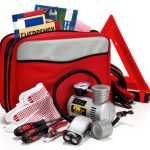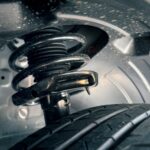How Do Old Tires Contribute to Hydroplaning?
Wondering how to prevent hydroplaning? For new and experienced drivers alike, any time your car slips and slides on wet roads—and even completely loses contact with the road, in some cases—it’s always a scary situation. There are several factors that increase a driver’s risk of hydroplaning, from tire issues to the depth of the water on the roadways. Here’s a brief guide to preventing this potentially dangerous occurrence from happening.
What is hydroplaning?
Hydroplaning, also known as aquaplaning, occurs when a car’s tires lose traction with the surface of the road due to water. It happens when water gets in front of your tires faster than you can drive through it, in some cases raising your vehicle so it slides on the layer of water. Even if you’re hydroplaning for only an instant or a few seconds, hydroplaning indicates that you’ve lost all traction and contact with the road.
There are several key factors that contribute to hydroplaning. Some of these are under your control, while others depend on weather and road conditions:
- Your speed: Generally, as the speed of your vehicle increases, your car’s wet traction is reduced, making it more susceptible to losing contact with the road.
- Your tires: Wondering if you should invest in a set of new tires? Tire issues directly contribute to hydroplaning. Worn tires with low tread depth have less traction with the road even on a good day. On rainy days, they have less ability to resist hydroplaning.
- Water depth: While even thin layers of water can cause hydroplaning, deeper water substantially increases the risk of losing traction.
- Water composition: The presence of oil, dirt and salts changes the composition of the water, in some cases increasing your car’s ability to slip and slide.
How to prevent hydroplaning
Luckily, there are things you can do to reduce your risk of hydroplaning. These include:
- Slow down: It’s best to slow down during both light and heavy rains, since the faster you drive, the more your wet traction is reduced. It’s not worth taking the risk to arrive at your destination a few minutes sooner—go a few miles per hour below the posted speed limit to be safe.
- Give your tires attention: Tires that don’t have adequate tread make your vehicle more prone to hydroplaning. Invest in new tires as soon as possible if your tread depth is low, and keep in mind that a depth of 1/16 of an inch is the legal minimum in most areas. Also, ensure your tires maintain proper air pressure. Talk to your trusted car repair technician if you’re unsure of the right pressure for your tires.
It’s clear that your driving habits, as well as the condition of your tires, directly impact your chances of hydroplaning. Instead of letting lingering tire issues affect your own safety, as well as the safety of others on the roadway, come to M & M Tire & Service Center and have them inspected. We’ll help you determine whether your tires still have plenty of life left, or if it’s smarter to invest in a new tire (or a full set) to help you drive safely on wet roads.
More...
Categorised in: Tire Shop
This post was written by Writer





